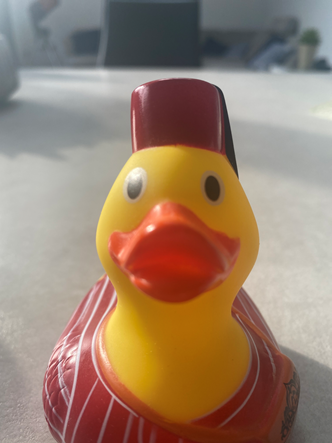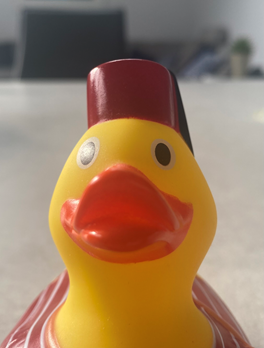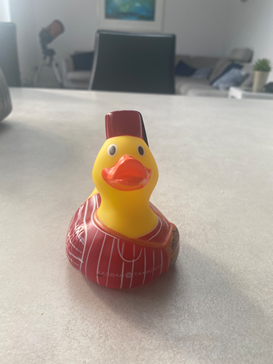https://prezi.com/view/EBfUewVaVPfkvcpIduP3/
Wednesday, December 9, 2020
Thursday, November 26, 2020
Wednesday, November 25, 2020
Thursday, November 19, 2020
PLANNING: MY TARGET AUDIENCE
When planning my project, and coming up with an opening sequence, it is important for me to understand what type of audience the sequence is aimed at, and how to market my project to them. Understanding my target audience allows me to create a product in which they will enjoy. I researched my target audience to understand what type of things they like and what kind of people they are, this included age, gender, ethnicity, and social class. This research will allow me to find an appropriate and effective way to reach my product to my target audience. I will show how I collected my research by answering questions.
1. Who is my primary target audience?
British females and males aged 15-34 who enjoy suspenseful, thriller movies.
2. What kind of films and television are they likely to prefer?
My target audience is likely to prefer films and television series that keep them on edge, with many suspenseful scenes and lots of plot twists that are revealed throughout the production. Some common themes from my research are obsessive stalking from the protagonist and dramatic irony, where the audience is exposed to more information than the antagonist. A television program that would fit this description is Nexflix's YOU, where a young male bookstore owner forms a crush on a young girl, however, the innocent crush becomes something even more sinister when she becomes his obsession, using social media and the internet, he uses every tool at his disposal to become close to her, even going so far as to remove any obstacle -including people - that stands in his way of getting to her.
3. What platforms do they choose to watch films and where are they likely to see information about films?
My target audience is most likely going to want to watch a movie in a niche market cinema such as Everyman or Oden, as they can experience the true quality a big screen and surround sound system. However, as my target audience is on the younger side, they will also enjoy experiencing movies online, using streaming websites like Netflix, Amazon or Sky and they may start to use other streaming services like Disney+.
4. What brands do they prefer?
5. What makes my film stand out from the competition?
To create a shock factor for the audience, as they may relate to the antagonist and create a sense of paranoia onto who may be watching them.
6 . Why should my audience watch my film?
My audience should watch my film as it focuses on a different type of storyline. The film focuses on a young schoolgirl who gets increasingly terrified by a stalker. My project will create eager and on edge emotions from the audience as they are grabbed into the suspense of the film.
Tuesday, November 3, 2020
Reaserch Title Sequences
Scary Stories To Tell In The Dark (2019)
Title Animation Studio: IAMSTATIC
Creative Directors: Ron Gervais, Dave Greene
Production Company: IAMSTATIC
Executive Producer: Andria Minott
Art Direction / Animation: Steven Hollman, Ron Gervais, Dave Greene, Chris Crozier
Modeling: Chris Crozier, Dave Greene,
Compositors: Steven Hollman, Ron Gervais, Dave Greene
Cinematography: Roman Osin
Film Editing: Patrick Larsgaard
Casting: Rich Delia
Production Design: David Brisbin
Art Direction: Brandt Gordon
Set Decoration: Patricia Larman
Costume Design: Ruth Myers
Ratched (2020)
Production Company: DivisionDirectors: Heidi Berg & Felix SoleticDirector of Photography: Vladan JankovićLive Action Producers: Adam Baxter / Urška VardijanProduction Designer: Miha Knific—Post ProductionCreative Directors: Heidi Berg & Felix SoleticEditor: Doron DorTypographer: Benjamin WoodlockDesigners: James Levy, Carlo Sa, Pete Sickbert-BennettAnimator: Sam Sparks, Trix Taylor, Laura ReedyCG Lead: Caleb Ollivant2D Compositor: Chris Russo, Krystal ChinnLighting: Scott Nishiki, Andy WilkoffModeling: Michael Dupree, Jordan GonzalesStoryboards: Arien Walizadeh, Lance SlatonEditorial Support: Rachel FowlerOnline Editor: Andrew YoungProducers: Michael Ross, Paul MakowskiAssociate Producer: Megan RodriguezExecutive Producer: Luke ColsonHead of Production: Kate BerryManaging Director: Jennifer Sofio HallSpecial Thanks: Milena MilicevicSeries Music by: Mac Quayle
RESEARCH: SCOOP IT!
In order to research and get ideas for my own project, I created my own SCOOP IT! account to collect various film trailers and openings that are based around the genre of horror/thriller. My group wanted to steer away from the supernatural aspects of some horror films and instead focus on the slow suspense that comes with these films. I researched films that were based around psychopaths and murders to help brainstorm ideas for my own project.
Friday, October 16, 2020
Digital Storytelling
In class, we watch the FutureLearn video about Digital Storytelling. The video was by Frank Ash who is the creative consultant for the BBC. To create this research project, I used Comic Life.
Wednesday, October 14, 2020
Friday, October 9, 2020
RESEARCH: FILM DISTRIBUTION
Other alternative posters were created that were digitally and hand drawn. The first poster shows the characters involved standing by the window. Outside the window the weather is gloomy and dark, which craetes an eerie atmosphere for the film, the dark fade around the edge of the poster also adds to this. This catches the eye as the bold red curtains, clothes and title contrasts against the dark fade. This would collect a target audience because at first glance it is clear that this film's genre is horror/thriller, and so that target audience would be attracted to this. By closer look, you can see the eyes of the characters are completely white, and their facial expressions are very solom, which also adds the the sinister mood.
Thursday, October 8, 2020
SOUND DESIGN IN FILMS
Sound design is a long procedure of research to create an audio setting that supports the action and engages the spectators. Sound is typically distributed into three essentials: the dialogue, the music and the sound effects. Typically, almost all sounds and/or music will be added in post-production.
The dialogue should be recorded as cleanly and crisply as
possible, with a tweak of background noise, usually recorded with a boom. After
getting a locked shot, directors usually hire a specific sound designer who
crafts pre-defined effects for the film’s genre. Music is important in film as
it can engage and manipulate certain emotions from the audience. Such as
anxiety, pleasure and fear. Putting music over shots enhances the desired
emotion from the shot, this could be racing heart, empathy etc. In the genre of
horror and thriller, these effects are used extensively within sound design.
Shock effects as well as frightening build-ups are very standard and work
great.
DUNKIRK (2017) – sound design
Director – Christopher Nolan
Sound designer - Richard King
The soundtrack in Dunkirk is completely composed by Hans Zimmer, and the main goal is to keep up high tension throughout the whole film, from start to finish. In order to keep the audience engaged and on the edge of their seat, the challenges and emotions of the characters in the film are portrayed through the soundtrack. Hans Zimmer use of a continuous ticking noise in ‘The Mole’ ( https://www.youtube.com/watch?v=JEc1uhdKRko ) over an overwhelming orchestra in order to create tension. Zimmer takes advantage of the Shepard Tone, which is an auditory illusion which makes the tone seem like it is constantly rising higher and higher, without actually rising at all. This creates the illusion of rising tension that carries the screenplay forward.
Nolan’s films are usually all about time, and Dunkirk
focuses on the little time the soldiers have left, as the soldiers are left
helpless as all they can do is wait, stranded and surrounded by the enemy. So
constantly using the Shepard tone throughout the film makes the tension that
comes with the context of the film intense.
In the film as a whole, there isn’t much dialogue in the
script and this was because Christopher Nolan wanted to “approach the
storytelling very much from a visual point of view, and an action-and-suspense
point of view”. The fact that Dunkirk has very little and simple dialogue
allows Nolan’s use of camera angles, body language, facial expressions and
staging in Dunkirk’s storytelling to be even more highlighted. By just watching
the events onscreen allow the audience members to really put themselves in the
shoes of the soldier, due to great use of visuals both in portraying minor
conflicts as well as in telling the story as a whole.
2001: A SPACE ODESSY – opening shot analysis
https://www.youtube.com/watch?v=e-QFj59PON4
The long-shot begins behind the moon, in the empty and
lifeless part of space. The shot is very dark and only the top half of the moon
can be seen. The camera pans upwards, Earth can now be seen, and the sun is
rising above it. The shot resembles the dawn of mankind, and creates a general
plot idea for the audience; the shot is not of a character or a group of
people, it is of all civilisation, therefore allowing the audience to recognise
that this is about humanity as a whole and not only one human being.
As the shot continues the sun rises up from the earth, the
sun is important as it is the only form of light in the shot, and is a symbol
of life. As an audience member, you are watching part of the cycle that happens
every day. The sun rising in the shot doesn’t only represent the start of the
day, but the start of mankind.
The music (composed by Richard Strauss) gives an epic and
large scale sense of weight to the shot, highlighting that as an audience
member, you are an outsider looking in on earth from the perspective of space.
As the camera zooms closer in, the view of the moon is lost and focuses on the
earth and sun. This shows the film is focused on earth and not just space as a
whole.
As the title appears onscreen, the audience knows from the
word ‘ODESSY’ that the film is about a journey; possibly the journey that
mankind has been through. As the climax of the music reaches, the sun fully
rises above the earth and becomes the main focus of the shot.
Wednesday, October 7, 2020
PRODUCTION PRACTICE: MONTAGE/TABLETOP SEQUENCE
Our brief was to create a title sequence using only a tabletop and props with a small part of live-action at the end, using a soundtrack. This was completed in 2 sessions.
In class, we began by watching various tabletop openings suggested by our teacher to inspire us. We watched the openings on Delicatessen (Jean-Pierre Jeunet 1991) and To Kill a Mockingbird (Robert Mulligan 1962). We also listened to music which we could use in our own opening.
I worked with Jess and Preesha, and we decided to base our tabletop scene around an investigation of a mother (Olivia Blake) who had gone missing. Our tabletop theme was Drama/Horror.
In session 1, we set up our tabletop presentation, in order to create a neutral background, we placed a black cloth over the table and layered our props over the top. Our props consisted of newspapers; a briefcase; an investigation board; a passport; lots of dollar bills and a screwdriver.
Using fake blood, we smeared the dollar bills and end of the screwdriver in order to suggest the idea that she had been murdered or hurt. With a printed picture of Olivia's face on a homemade newspaper, Jess covered her hands in fake blood and placed the screwdriver down on top of it to heighten drama and tension.
CONTINUITY EDITING
With this continuity exercise, we wanted to explore the idea of camera shots and movement. My group used the idea of 'who wants to be a millionaire?' to base our short film on. In order to create an idea of what camera movements and actions we wanted and in what order, we created a storyboard to plan the camera angles and shots.
I played the contestant while Tom played the host and Jess played the friend who I call for help.
One of the challenges we faced was that the green screen we used in order to set the scene in the 'Who wants to be a millionaire?' which we would edit later on an iMac, was not wide enough, and therefore we weren't able to film a shot-reverse-shot. However, we overcame this challenge by taking turns to switch seats, in order to not break the 180-degree rule.
PRODUCTION PRACTICE: MONTAGE/TABLETOP SEQUENCE
Our brief was to create a title sequence using only a tabletop and props with a small part of live-action at the end, using a soundtrack. This was completed in 2 sessions.
In class, we began by watching various tabletop openings suggested by our teacher to inspire us. We watched the openings on Delicatessen (Jean-Pierre Jeunet 1991) and To Kill a Mockingbird (Robert Mulligan 1962). We also listened to music which we could use in our own opening.
I worked with Jess and Preesha, and we decided to base our tabletop scene around an investigation of a mother (Olivia Blake) who had gone missing. Our tabletop theme was Drama/Horror.
In session 1, we set up our tabletop presentation, in order to create a neutral background, we placed a black cloth over the table and layered our props over the top. Our props consisted of newspapers; a briefcase; an investigation board; a passport; lots of dollar bills and a screwdriver.
Using fake blood, we smeared the dollar bills and end of the screwdriver in order to suggest the idea that she had been murdered or hurt. With a printed picture of Olivia's face on a homemade newspaper, Jess covered her hands in fake blood and placed the screwdriver down on top of it to heighten drama and tension.
ON THE SET
I learnt different camera techniques by reading the website: The Grammar of Television and Film by Daniel Chandler.
By studying this website, it gave me insights into how I can vary the sizes and angles of my shots to focus the viewers attention onto specific objects and/or people and depict certain emotions and feelings. The camera I used to explore different camera techniques was an iPhone 11.
WELCOME TO MY BLOG!
CHARLOTTE COPPELLOTTI CANDIDATE NUMBER 1812 CLAREMONT FAN COURT SCHOOL 64680 Welcome! My production team included: Jess Foster 1820, Ellie S...

-
With this continuity exercise, we wanted to explore the idea of camera shots and movement . My group used the idea of ' who wants to be...
































